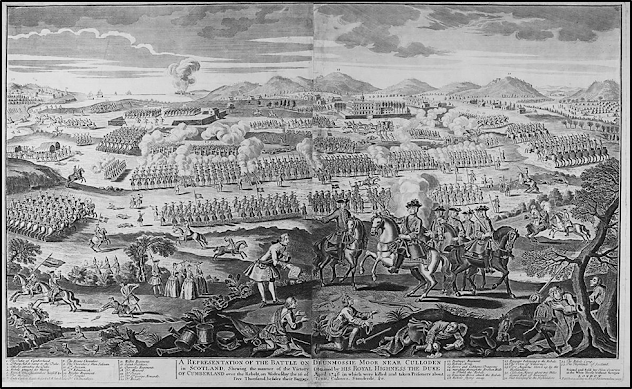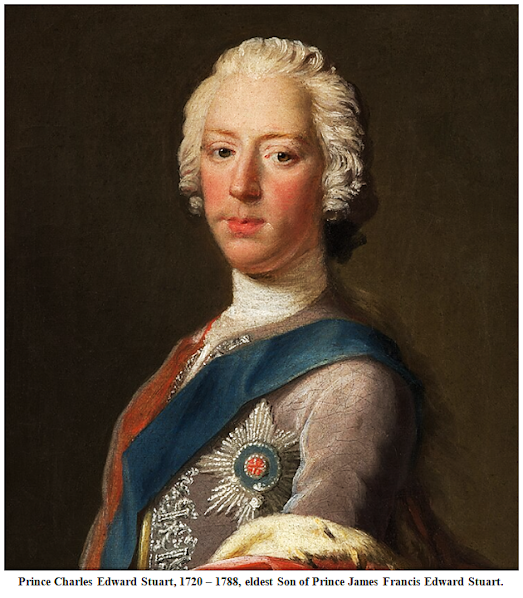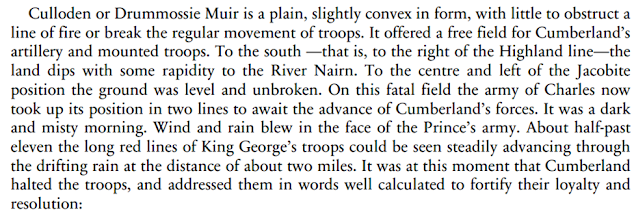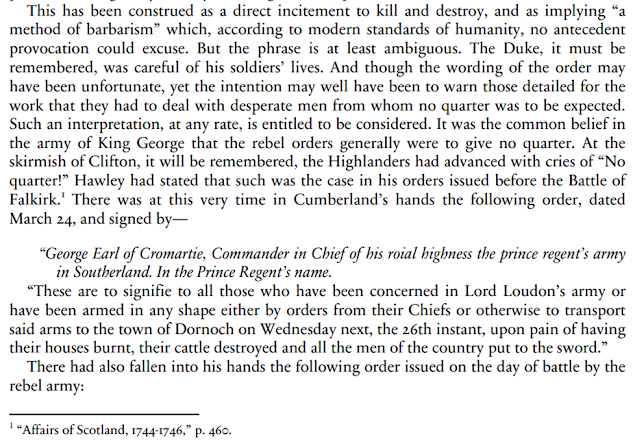Oil Paintings, Watercolours and Prints
within Kinloch Castle - Part Two.
Sir George Bullough, Baronet. Lady Monica Lilly Bullough.
Written from on-site research and illustrated with photographs from his personal archive by George W. Randall, co-founder in July 1996 and former Vice Chairman Kinloch Castle Friends' Association.
*
A selection of the vulnerable 300+ Oil Paintings, Watercolours and Prints within Kinloch Castle, a late Victorian Hunting Lodge on the Isle of Rum, off Scotland’s West Coast.
The second of a series of blogs on the photographs and pictures within Kinloch Castle, in which I highlight the consequences totally failed management and complete indifference over sixty-six years,
have, and continue to wrought on the contents, particularly the pictures, in this
*
On the 28th of February 1957, the eighty-seventh anniversary of the birth of
Sir George Bullough, Bt., his eighty-eight year old widow sold their forty square mile island along with Kinloch Castle - its late Victorian/Edwardian furnishings in-situ -
to the Conservative Government of the day for £23,000,
the island to be used in perpetuity as a nature reserve.
the island to be used in perpetuity as a nature reserve.
In a signed document it was agreed the contents were to be known as the Sir George Bullough Memorial.
INTRODUCTION:
<*> <*> <*> <*> <*> <*> <*> <*> <*> <*> <*> <*> <*> <*> <*> <*>
THE
MOST DRAMATIC PAINTING IN KINLOCH CASTLE
A
striking full-face depiction of a mounted cavalry officer wielding his sword in outstretched right
hand, his snorting black Charger at full gallop!
Original Watercolour - signed R. C. W.
Displayed
in the Billiard / Games Room at Kinloch Castle this undated original 18 x 12
inch watercolour signed R.C.W. still bears the Inventory of Contents identification number 150 carried out in 1978 by auctioneers Phillips of Scotland,
Ltd.,
when it was described simply as
“Another water colour drawing.”

Phillips carried out further inventories in 1992 and 1996, the latter being an almost word for word copy of the former, in which the painting was described: “Other assorted items (including) watercolour of charging horseman.”
In
the 2007 Inventory fine art auctioneers Bonhams also bundled it with other
items,
describing them on page 60:
describing them on page 60:
“The
remaining contents of the (billiard) room including a framed photograph, ... watercolour of charging horseman ... print of Rum, carved elephant,
various photographs, various games.”
various photographs, various games.”
Regrettably
this system of bunching items seems to have been common practice amongst
Britain's leading auction houses,
thereby completely defeating the purpose
of the exercise not
only in terms of identification and valuation of individual items,
only in terms of identification and valuation of individual items,
THE ARTIST: R.C.W.
RICHARD CATON WOODVILLE (b.1856 - d.1927)
Richard Caton
Woodville was born in London
on the 7th of January 1856.
His
father, also Richard Caton, was an American artist from Baltimore who spent his professional career in Europe and sadly died five months before his son was born.
Richard (jnr.)
studied at the Düsseldorf School of Painting under the Prussian military artist
Professor Wilhelm Camphausen,
who specialised in historical and battle scenes,
later under Professor Franz Jean-Esuard von Gebhardt at the Academy of St.
Petersburg and finally under the renowned French painter and sculptor Jean-Léon
Gérôme (1824 – 1904) in Paris.
As an
accomplished artist Woodville worked primarily for The London Illustrated News,
but also made contributions to The Tatler,
Strand Magazine and Cornhill
Magazine;
articles which very soon earned
him a reputation as a talented
illustrator and reporter.
At twenty-one
years of age he was sent to report on the 1877-1878 Russo-Turkish War between
the Russian and Ottoman Empires; a conflict involving over half a million men,
it was his first experience of the horrors of bloody battle.
In 1879 joined
the cavalry unit of the Royal Berkshire Yeomanry staying until 1914,
at which time, aged sixty, he joined the
National Reserve as a captain.
at which time, aged sixty, he joined the
National Reserve as a captain.
From July to
September 1882 Woodville covered the Anglo-Egyptian War, between British forces
under Field Marshal Viscount Wolseley and those of Egypt and Sudan under
Egyptian nationalist, lieutenant colonel Ahmed Arabi who sought to end British
and French influence in his country by deposing the ruler, Mohamed Tewfik Pasha.
 (British concern centred on fear of default by Egypt
on her national debt of
(British concern centred on fear of default by Egypt
on her national debt of £100 million, requiring two-thirds of Egypt’s revenue to service, and control of the Suez Canal opened in 1869 which halved the journey time to the jewel in the British crown, India, and through which four fifths of shipping was British. The uprising ended with the bombardment of Alexandria, Egypt becoming a British protectorate remaining under British control until the end of
World War II.)
THE PAINTING
The Royal Berkshire Cavalry served in the Boer War, 1899 –
1902, and from his sketches Woodville saw action as a reporter and possibly as a combatant.
Indeed, the Elandslaagte battle entered British folklore under the title “Ell and Slaughter”, referring to the devastating, no quarter given cavalry attack.

 Eight days into the conflict,
Eight days into the conflict,
the 19th of October 1899, after cutting the telegraph line, and just as a supply train steamed into the station
the Boers overran the small, dusty railway town of Elandslaagte, KwaZulu, Northern Natal, on the line between the towns of Dundee and Ladysmith, sixteen miles north-east of Ladysmith,
This not only cut the key British supply route but any prospect of retreat by rail for British forces under attack at Dundee.
Indeed, the Elandslaagte battle entered British folklore under the title “Ell and Slaughter”, referring to the devastating, no quarter given cavalry attack.

 Eight days into the conflict,
Eight days into the conflict, the 19th of October 1899, after cutting the telegraph line, and just as a supply train steamed into the station
the Boers overran the small, dusty railway town of Elandslaagte, KwaZulu, Northern Natal, on the line between the towns of Dundee and Ladysmith, sixteen miles north-east of Ladysmith,
This not only cut the key British supply route but any prospect of retreat by rail for British forces under attack at Dundee.

On the 21st of
October, 1899, in what soon developed into a violent thunderstorm as
darkness was rapidly falling, British and Boer forces engaged at
Elandslaagte.
A total force of 3,500 British led by
Field Marshal Sir John French, a firm exponent of the use of cavalry, and General Sir Ian Hamilton in command of the infantry faced
 one thousand Boers under General Johannes Kock (who was captured and died shortly after of his wounds in hospital at Ladysmith),
one thousand Boers under General Johannes Kock (who was captured and died shortly after of his wounds in hospital at Ladysmith), and Lieutenant Colonel Adolf Schiel, who was also captured but survived the war.
The British
victory, which ended when a conventional cavalry charge turned the Boer retreat into a bloody rout, resulted in fifty-five of their number killed and 205 injured, with forty-six
Boers killed, 105 wounded with 181 captured
or missing. Elandslaagte is seen as “one of the few clear-cut tactical successes
by the British during the
conflict.”
Barely two weeks
later the famous one-hundred and sixteen day Siege of Ladysmith commenced
lasting from the 2nd of November 1899 to 28th of February
1900.
The writer
suggests that based on the above facts, the darkness of Mr. Woodville's watercolour
the work represents a scene from the Elandslaagte battle.
Further,
the facial similarity between the rider in the painting and the artist suggest
a self-portrait, real or imagined, of his participation in this famous cavalry charge.
<*> <*> <*> <*> <*> <*> <*> <*> <*> <*> <*> <*> <*> <*> <*> <*>
A Representation of the Battle on Drunmossie Moor, Near Culloden in Scotland.
Published by Henry Overton, 30th June 1746.
Displayed at a height of over six feet at the east end of the ground floor south corridor
by Lady Bullough’s Drawing Room is this glazed, ebony framed
Representation of the Battle of Drunmossie Moor measuring 39 x 22 inches.















































































No comments:
Post a Comment